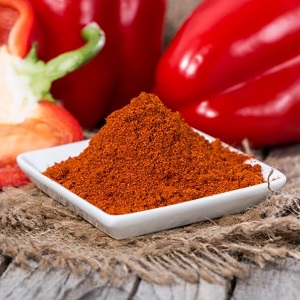- No. 268 Xianghe Street, Economic Development Zone of Xingtai city, Hebei 054001 China
- Byron@hbhongri.cn
Exploring the Varieties and Uses of Chili Pods in Cooking
The Fascinating World of Chili Pods
Chili pods are not just a culinary ingredient; they are a vibrant symbol of culture and history that transcends borders. These dried forms of chili peppers serve as an essential seasoning in many cuisines, particularly in Latin American, Asian, and Mediterranean dishes. Their unique flavors can range from smoky and sweet to fiery and intense, making them a central figure in the kitchen of spice enthusiasts and casual cooks alike.
The journey of chili pods begins with the chili pepper itself, which belongs to the Capsicum family. Native to the Americas, chili plants have been cultivated for thousands of years. Upon their introduction to Europe after the Columbian Exchange, they quickly spread across the globe, becoming a staple in diverse culinary traditions. The drying of chilies into pods not only concentrates their flavors but also provides a longer shelf life, which was essential for preservation before refrigeration became commonplace.
Different types of chili pods can be found worldwide, each with its distinctive qualities. For instance, the Ancho chili, which is the dried version of the Poblano pepper, has a mild, sweet flavor complemented by a hint of raisin. On the other hand, the Chipotle chili is a smoked and dried jalapeño that brings a rich, smoky heat to dishes. Correlessly, the Cayenne pepper pod is known for its intense heat, perfect for those who crave a spicy kick in their meals.
The preparation and use of chili pods vary significantly among cultures. In Mexican cuisine, they are often rehydrated in hot water before being blended into salsas, sauces, and marinades. One classic dish that utilizes a variety of chili pods is mole, a complex sauce that comprises numerous ingredients, including nuts, spices, and chocolate. South Asian cuisine also incorporates dried chili pods, which can be ground into powders or added whole to tempering oils for flavor infusion.
chili pods

Even though chili pods are primarily appreciated for their taste, they are also gaining recognition for their health benefits. Rich in vitamins A and C, as well as capsaicin, the compound responsible for the spicy sensation, chili pods can help boost metabolism and reduce inflammation. Additionally, capsaicin is known to have pain-relieving properties and has been studied for its potential role in weight management.
As the culinary world evolves, chili pods are also being showcased in innovative ways. Chefs experiment with them in fusion dishes, combining them with unexpected ingredients to create unique flavor profiles. For example, chili-infused chocolate desserts or chili-spiked cocktails have gained popularity, proving that the versatility of chili pods knows no bounds.
Moreover, the popularity of chili pods has led to a growing interest in chili pepper festivals around the world, where enthusiasts gather to celebrate and showcase different varieties. Events like the New Mexico Chile Festival or the Fiery Foods Festival highlight the importance of chilies in various culinary forms, from sauces and baked goods to artfully crafted dishes by renowned chefs.
In conclusion, chili pods are more than just a spice; they encapsulate a rich history, cultural significance, and endless culinary possibilities. Whether you are a spice aficionado or a casual cook, incorporating chili pods into your meals can elevate your dishes while introducing you to a wholesome ingredient that has stood the test of time. So, the next time you reach for that small packet of chili pods in your pantry, remember the vibrant journey they have taken to reach your plate and the explosion of flavor they are about to unleash in your cooking.
-
Turmeric Rhizome Powder: A Golden Treasure from Roots to TableNewsJul.28,2025
-
The Versatile Application Of Crushed Red Hot Peppers: Lighting Up The Red Flames On The Dining TableNewsJul.28,2025
-
The Paprika: A Touch Of Vibrant Red In Color, Flavor, And CultureNewsJul.28,2025
-
Ground Turmeric: A Modern Examination of an Ancient SpiceNewsJul.28,2025
-
Capsicum Liquid Extract: Features, Applications, and ChallengesNewsJul.28,2025
-
Application of Capsicum Liquid Extract in FoodNewsJul.28,2025







